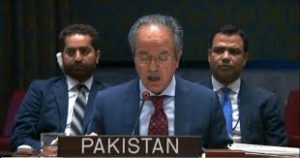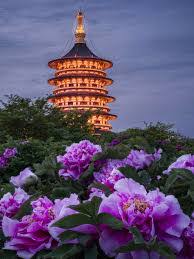BRI yields fruitful results in China-Pakistan cooperation

Beijing: In the Thatta district of southern Pakistan’s Sindh province, more than 100 wind turbines are constantly delivering green power to households in the rural areas.
“This is an important part of our wind power project portfolio, and at present, all 12 wind power projects, with a total installed capacity of 610 MW, have been connected to the grid,” said Yang Jianduo, chief representative of PowerChina in Pakistan.
According to Yang, the project portfolio has created over 20,000 jobs for locals, and once fully completed, it will provide 2 billion kilowatt-hours of clean energy annually, equivalent to a 2-million-tonne reduction in carbon dioxide emissions, Xinhua reported. These projects are under the framework of the 3,000-km-long China-Pakistan Economic Corridor (CPEC), a flagship project of the China-proposed Belt and Road Initiative (BRI). Launched in 2013, the CPEC is a corridor linking Pakistan’s Gwadar port with Kashgar in northwest China’s Xinjiang Uygur Autonomous Region, highlighting energy, transport and industrial cooperation. The CPEC has achieved fruitful results, noted Hassan Daud Butt, senior advisor at the China Study Center of the Sustainable Development Policy Institute, an Islamabad-based think tank. By the end of 2022, the CPEC had brought a direct investment of 25.4 billion U.S. dollars to Pakistan, created 236,000 jobs and helped Pakistan add 510 kilometers of expressways and 8,000 megawatts of power supply, he said while attending the Second Conference of Global Economic Development and Security Forum of Boao Forum for Asia, held in late October in Changsha, central China’s Hunan Province. “We are very happy and proud to say that we have actually achieved most of our targets and projects,” he added.
Over 2,500 representatives from government departments, international organizations, academia and leading multinationals attended the conference, which aimed to explore the interrelationship and impact between development and security and better cope with global economic risks and structural problems. Cooperation under the framework of the BRI was a major topic for discussion at the conference as this year marks the 10th anniversary of its launch. In Pakistan’s northwestern province of Khyber Pakhtunkhwa, the 272-meter-high Diamer-Bhasha Dam on the River Indus is under intensive construction.
As a landmark project of China-Pakistan friendship and cooperation, it will be the tallest roller compact concrete dam in the world, with an installed capacity of 4.5 million kilowatt once completed, generating an estimated 18.1 billion kilowatt-hours of electricity every year. Tabi Satti, who returned to Pakistan in 2021 after six years of study and work in China, now works as the project manager. “When I was studying in China, every time I returned home, I could see the changes that BRI has brought to my hometown,” he said. “We have smoother roads, easier travel, better quality and stable electricity, and more importantly, more job opportunities… BRI has brought broad development opportunities to Pakistan, and has given me the confidence to participate in it.” Over the past decade, CPEC has turned vision into reality in Pakistan, and it continues to do so.The China-funded New Gwadar International Airport and Gwadar East-Bay Expressway will soon be put into operation, investment is pouring in for the first phase of the Rashakai Special Economic Zone (SEZ), and China’s hybrid rice has significantly increased Pakistan’s total crop yield.




